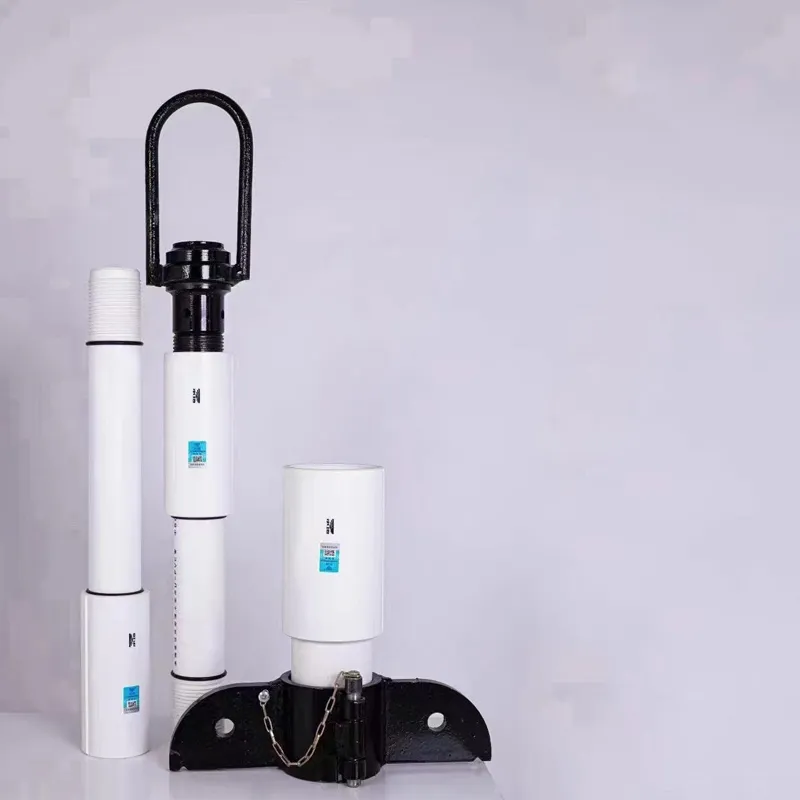Aug . 28, 2024 14:57 Back to list
hdpe to pvc pipe coupling product
Understanding HDPE to PVC Pipe Coupling A Comprehensive Overview
In the world of plumbing and piping, efficient connections play a crucial role in ensuring a robust infrastructure. One such solution is the coupling that connects High-Density Polyethylene (HDPE) pipes to Polyvinyl Chloride (PVC) pipes. This coupling is increasingly gaining popularity due to its myriad advantages, but understanding its applications, benefits, and installation process can help users make an informed choice.
What is HDPE and PVC?
High-Density Polyethylene (HDPE) is a versatile plastic commonly used in pipe manufacturing because of its strength, durability, and resistance to various chemicals. HDPE pipes are lightweight, flexible, and can withstand high pressure, making them ideal for water supply, agricultural, and industrial applications.
On the other hand, Polyvinyl Chloride (PVC) is also a widely used plastic but is known for its rigidity and ease of installation. PVC pipes are primarily used in drainage systems, irrigation, and various plumbing applications. Each type of pipe has its own unique properties and requirements, contributing to the importance of effective coupling solutions.
The Importance of Coupling
Coupling refers to the joining mechanisms that connect two separate pipeline segments. When transitioning from HDPE to PVC, a proper coupling system is necessary to ensure a leak-free, robust connection. This is critical, as improper couplings can lead to leaks and water loss, resulting in costly repairs and environmental concerns.
Advantages of Using HDPE to PVC Couplings
1. Versatility The ability to transition from HDPE to PVC opens up a wide array of applications. Couplings can accommodate various pipe diameters and types, making them adaptable to different projects.
2. Durability HDPE to PVC couplings are designed to withstand harsh environmental conditions. They resist corrosion, UV radiation, and chemical exposure, ensuring longevity in various applications.
3. Ease of Installation Couplings enable quick and straightforward installations, which can significantly reduce labor costs and project timelines. Their design typically allows for socket welding or mechanical fastening, making them user-friendly.
hdpe to pvc pipe coupling product

4. Cost-Effectiveness While the initial investment may seem high, the long-term maintenance savings and reduced risk of leaks make HDPE to PVC couplings a smart financial choice.
Installation Process
Installing an HDPE to PVC coupling is a straightforward process but should be conducted with care to ensure a proper seal. Here’s a brief overview of the steps involved
1. Preparation Ensure the ends of both the HDPE and PVC pipes are clean and free from debris.
2. Cutting If necessary, cut the pipes straight to allow for a snug fit.
3. Aligning Position the coupling over the ends of the pipes, making sure they are evenly aligned.
4. Securing Use the appropriate fastening method (such as welding or threaded connections) to secure the coupling in place.
5. Testing After installation, it’s advisable to test for leaks by pressurizing the system to ensure a tight fit.
Conclusion
The transition from HDPE to PVC pipes via coupling is a practical solution in modern plumbing and piping systems. By understanding the properties, advantages, and installation procedures of these couplings, users can make informed decisions that lead to more efficient and effective plumbing solutions. Whether it’s for residential, commercial, or industrial applications, investing in high-quality HDPE to PVC couplings can yield significant benefits in the long run.
-
High-Quality PVC Borehole Pipes Durable & Versatile Pipe Solutions
NewsJul.08,2025
-
High-Quality PVC Perforated Pipes for Efficient Drainage Leading Manufacturers & Factories
NewsJul.08,2025
-
High-Quality PVC Borehole Pipes Durable Pipe Solutions by Leading Manufacturer
NewsJul.08,2025
-
High-Quality PVC Borehole Pipes Reliable PVC Pipe Manufacturer Solutions
NewsJul.07,2025
-
High-Quality UPVC Drain Pipes Durable HDPE & Drain Pipe Solutions
NewsJul.07,2025
-
High-Quality Conduit Pipes & HDPE Conduit Fittings Manufacturer Reliable Factory Supply
NewsJul.06,2025

